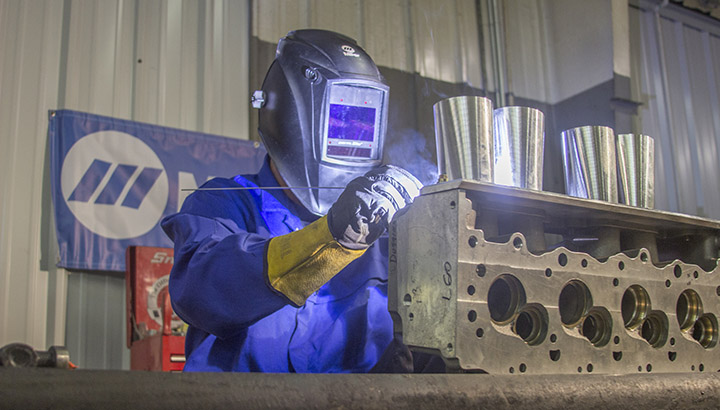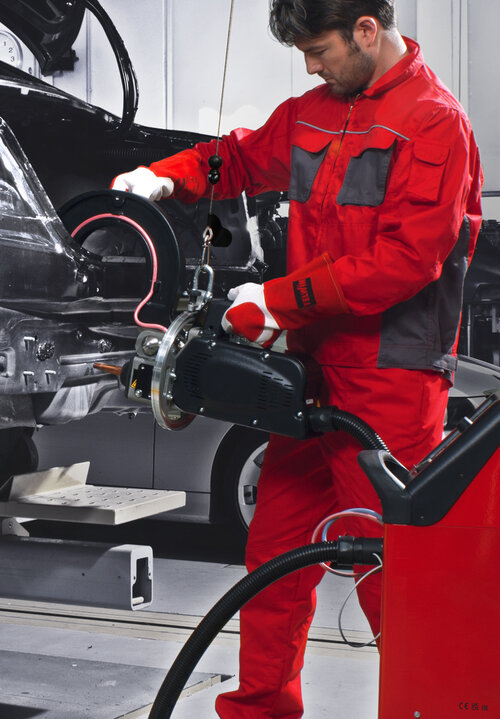Everything about Welding: Key Insights Into Techniques and Finest Practices for Success
Welding incorporates a range of methods, each suited for particular materials and applications. Recognizing these techniques, such as GMAW, SMAW, and TIG, is vital for achieving perfect results. Furthermore, the ideal devices and safety techniques can not be forgotten. As preparation and fixing play crucial duties in the welding procedure, grasping these elements can substantially boost the quality of the final item. What are the key elements that assure a successful weld?
Understanding Different Welding Techniques
Welding strategies incorporate a range of techniques, each suited to certain applications and products. Amongst the most typical strategies are Gas Steel Arc Welding (GMAW), Secured Metal Arc Welding (SMAW), and Tungsten Inert Gas Welding (TIG) GMAW, additionally known as MIG welding, is preferred for its speed and convenience, making it excellent for slim products. SMAW, or stick welding, is favored for its simplicity and effectiveness in exterior environments, specifically with thicker metals. TIG welding supplies accuracy and control, making it appropriate for detailed job and non-ferrous steels (Montana Mobile Welding and Repair). Each strategy has its special benefits and considerations, allowing welders to pick the best approach based on the task's needs, product kind, and wanted outcomes. Understanding these methods is important for successful welding
Essential Welding Tools and Tools
While numerous welding strategies call for certain abilities, the ideal tools and tools are just as essential for accomplishing top quality results. Vital welding devices consists of welding makers, which differ depending upon the strategy-- such as MIG, TIG, or stick welding. Protective gear, including aprons, handwear covers, and helmets, guarantees safety and security and convenience during the procedure. On top of that, fixtures and clamps help secure materials in place, guaranteeing accuracy in welds. Consumables like welding rods, cord, and shielding gas are also essential elements that influence the top quality of the weld. In addition, devices such as mills and cutters assist in surface preparation and post-weld completing, adding to an expert result. Investing in high-grade tools eventually improves the effectiveness and effectiveness of welding tasks.
Security Practices in Welding
Appropriate security practices are necessary in the welding industry to shield employees from possible risks. Welders must use ideal individual safety devices (PPE), consisting of safety helmets with appropriate shading, handwear covers, and flame-resistant clothes. Sufficient air flow is vital to lower exposure to harmful fumes and gases produced throughout the welding procedure. In addition, employees should be trained in the correct handling of welding equipment to avoid accidents. Fire safety actions, such as maintaining combustible products away from the welding location and having fire extinguishers easily available, are required. Regular assessments of devices and work areas can aid determine possible threats before they result in accidents. By adhering to these safety and security practices, welders can produce a much safer working atmosphere and reduce threats related to their trade.
Readying Products for Welding
Preparing products for welding is an important action that considerably influences the quality and integrity of the final item (Montana Mobile Welding and Repair Fabrication). Proper prep work includes cleaning the surfaces to eliminate impurities such as oil, corrosion, and dust, which can endanger the weld. Techniques such as grinding, fining sand, or making use of solvents are typically used to attain a tidy surface area. Furthermore, guaranteeing that the materials mesh comfortably is vital; spaces can result in weak welds. It's also essential to consider the alignment and positioning of the parts, as this will impact the convenience of welding and the final end result. Lastly, choosing the appropriate filler material and making sure compatibility with the base steels is essential for attaining strong, resilient welds
Tips for Achieving High-Quality Welds
Accomplishing top quality welds calls for attention to information and adherence to best practices throughout the welding procedure. Proper joint prep work is necessary, ensuring surface areas are totally free and clean from impurities. Choosing the proper filler product and welding technique based upon the base metals is critical for ideal bonding. Preserving regular traveling rate and angle while welding can advertise and stop issues harmony. In addition, controlling warmth input is crucial; excessive warmth can result in bending and deteriorated joints. If essential, frequently examining the welds throughout the process enables for instant changes. Utilizing suitable post-weld therapies, such as cleaning and anxiety alleviation, can boost the resilience and integrity of the weld, eventually ensuring a successful result.
Troubleshooting Common Welding Issues
Welding frequently presents challenges that can impact the top quality and stability of the end product. Typical problems such as porosity, irregular weld beads, and overheating can occur, each calling for specific troubleshooting techniques. Recognizing these troubles is crucial for welders to improve their abilities and achieve excellent outcomes.
Porosity Problems Discussed
Although porosity can frequently be ignored, it continues to be an important concern in welding that can jeopardize the honesty of a completed product. Porosity describes the visibility of tiny gas pockets within the weld bead, which can Recommended Reading deteriorate the joint and lead to early failure. This trouble commonly develops from contaminants, wetness, or inappropriate protecting gas protection during the welding procedure. To alleviate porosity, welders ought to verify that the base products are dry and tidy, use ideal shielding gases, and maintain consistent welding criteria. Consistently examining the devices and environment can additionally help identify prospective concerns before they manifest in the weld. Resolving porosity efficiently is important for achieving solid, durable welds that meet high quality standards.

Irregular Weld Beans
Irregular weld grains can substantially impact the high quality and stamina of a completed product. Different variables add to this issue, consisting look these up of improper travel speed, incorrect amperage settings, and irregular electrode angles. When the welder relocates also quickly, a bead might show up slim and lack infiltration, while moving too slowly can trigger extreme build-up. Additionally, utilizing the wrong amperage can lead to either undercutting or excessive spatter, both of which compromise weld integrity. The welder's strategy, such as inconsistent torch movement, can likewise cause unequal grain appearance. To alleviate these problems, welders should concentrate on preserving constant, controlled movements and guaranteeing correct tools settings to attain uniformity in their welds. Uniformity is key to achieving reliable and strong welds.
Getting Too Hot and Warping Issues
Too much warm during the welding process can result in considerable overheating and warping concerns, impacting the structural stability of the workpiece. These problems often manifest as distortion, which can jeopardize positioning and fit-up, making further assembly testing. Factors adding to overheating include the selection of welding criteria, such as voltage and take a trip rate, as well as the kind of material being welded. To reduce these concerns, welders should keep regular traveling speed and suitable warmth input while checking the work surface temperature. Additionally, preheating or post-weld warmth treatment can help reduce stresses caused by fast air conditioning - Montana Mobile Welding and Repair Belgrade Welding. Routine assessment and adherence to finest techniques are crucial in avoiding getting too hot and making sure the longevity and integrity of welded frameworks
Often Asked Questions
What Are the Career Opportunities in the Welding Industry?
The welding sector offers varied career opportunities, consisting of settings as welders, examiners, instructors, and designers. Experts can work in manufacturing, construction, aerospace, and auto industries, profiting from strong demand and affordable wages in numerous duties.
Just How Can I Improve My Welding Rate Without Compromising Quality?
To boost welding rate without sacrificing top quality, one need to exercise effective techniques, keep tools, enhance setups, and enhance hand-eye coordination. Regular training and seeking feedback can additionally considerably add to achieving faster, top notch welds.
What Accreditations Are Offered for Welders?
Various qualifications exist for welders, consisting of those from the American micro welding Welding Society (AWS), the National Center for Construction Education And Learning and Research Study (NCCER), and various industry-specific organizations. These qualifications boost employability and demonstrate ability efficiency.
Just How Does Welding Influence the Residences of Metals?
Welding affects the buildings of metals by modifying their microstructure, which can bring about adjustments in stamina, ductility, and hardness. Warm input and cooling prices during the procedure greatly influence these product attributes.
Can I Bonded Dissimilar Metals With Each Other?

Comments on “Belgrade Fabrication’s go-to strategies for dealing with incomplete fusion”